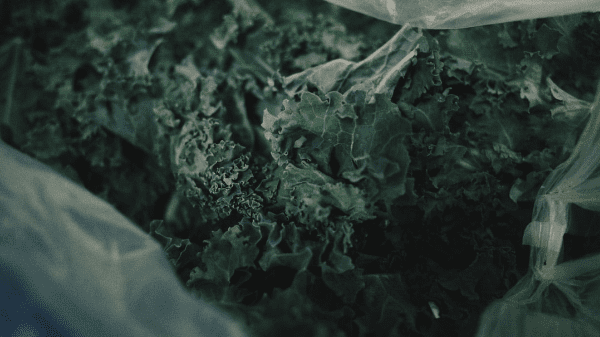“Forever chemicals”— it’s an expression we’re hearing more and more of these days. They are more accurately known as poly- and per-fluoroalkyl substances (or PFAs), and they have been found in many parts of the environment, including drinking water and food.


Because they can resist both grease and water, PFAs have proved useful in many products, including nonstick cookware, plastic packaging, carpeting, and waterproof clothing, as well as dental floss and tampons. Unfortunately, this property is due to a carbon-fluoride bond, which is one of the strongest known to chemistry and therefore highly resistant to breakdown: hence “forever chemicals.”
A recent report issued by the Alliance for Natural Health indicates that these chemicals have been found in kale samples purchased “at a selected retail outlet in each of four states, namely: Stop & Shop, New York; Publix, Georgia; Weis, Pennsylvania; and Wholefoods, Arizona. Two kale samples (conventionally grown, and organically certified) were purchased from each store” and analyzed for PFAs. Three samples were loose at the point of sale, while the remainder “were pre-packed in some form of plastic bag or container,” says the report, adding, “The amounts in kale might frequently exceed the levels considered safe by the EPA for drinking water.”
“Only one of 8 samples had no detectable levels, this being the conventional kale sample taken from Stop & Shop in New York.” In fact, PFA samples were found in both conventional and organic products.
“While the PFAS levels found in 7 of 8 kale samples may appear low, it was our expectation that they would be zero given that the US Total Diet Survey data (2019-21) had found no evidence of contamination in any plant foods,” the report continues.
“Moreover, the FDA has been monitoring PFAS in the food supply and its own data suggests contamination is limited to certain seafoods and meat product,” the report continues, asserting, “We cannot trust what regulators like the FDA [Food and Drug Administration] are telling us, specifically in this case: that plant foods are PFAS-free.”
Are PFAs toxic for consumers at the levels discovered? We don’t know.
“For more than 99 percent of PFAS chemicals, no data on repeated-dose toxicity, carcinogenicity, or reproductive toxicity is available,” the report points out. “Nor is there an understanding of the cumulative effects of being exposed to multiple PFAS compounds at the same time.”
The Alliance for Natural Health is calling for a complete regulatory ban of these chemicals within five years.
I contacted two industry organizations for comments.
Teresa Thorne of the Alliance for Food and Farming, replied, “I would suggest contacting a toxicologist for an assessment of these findings. Our information and expertise is specific to pesticide residues, not PFAS, and a scientist would be best to comment on this.”
Siobhan May, director of communications and public relations for the International Fresh Produce Association, did not reply to a request for a comment.
PFAs, being almost omnipresent, are not a concern limited to the produce industry. But it seems likely that the industry will have to deal with their effects over the long run, in terms of both public safety and public relations.



